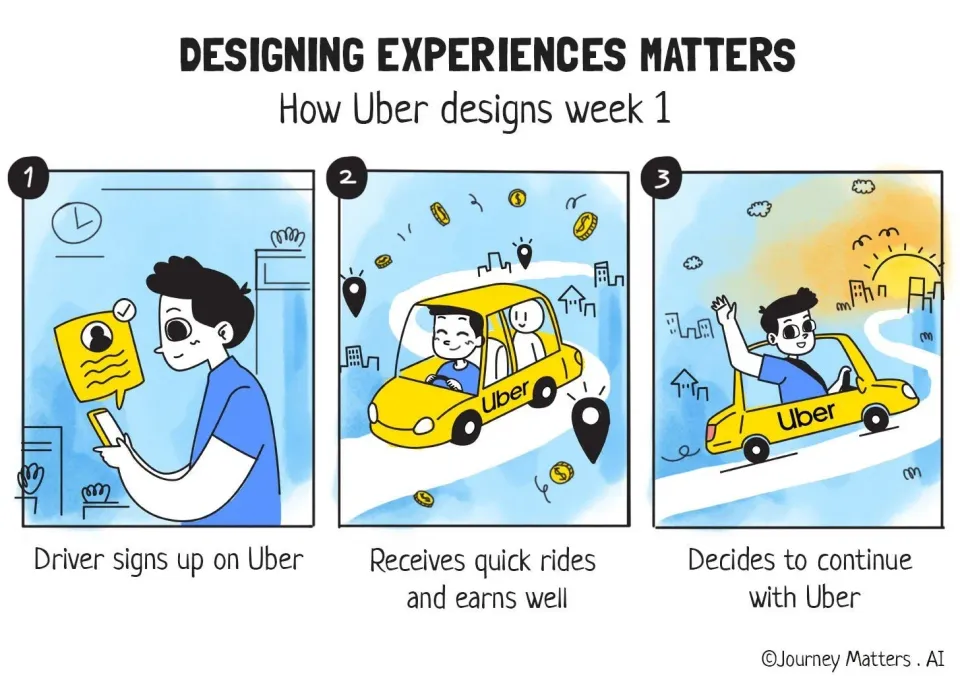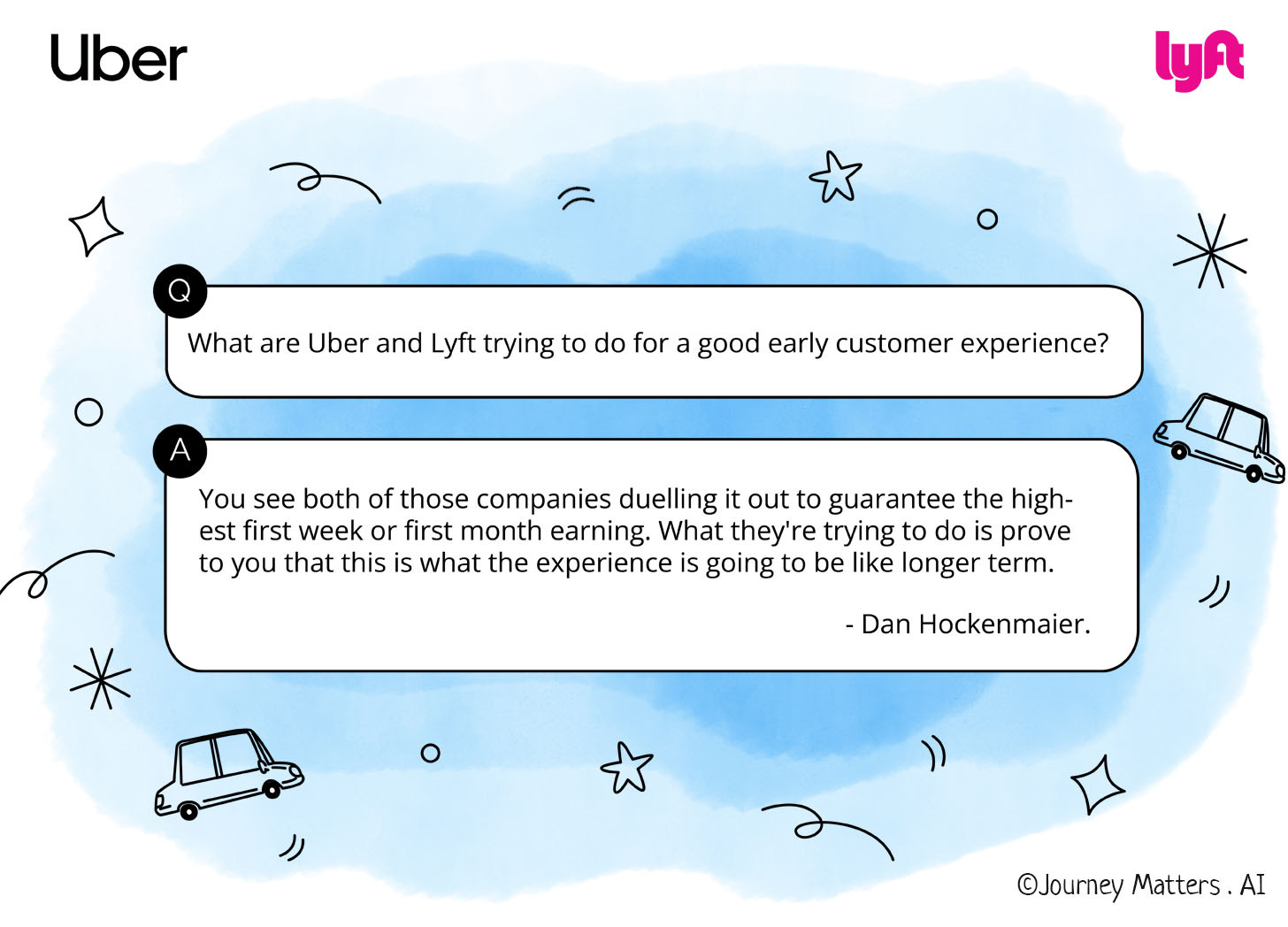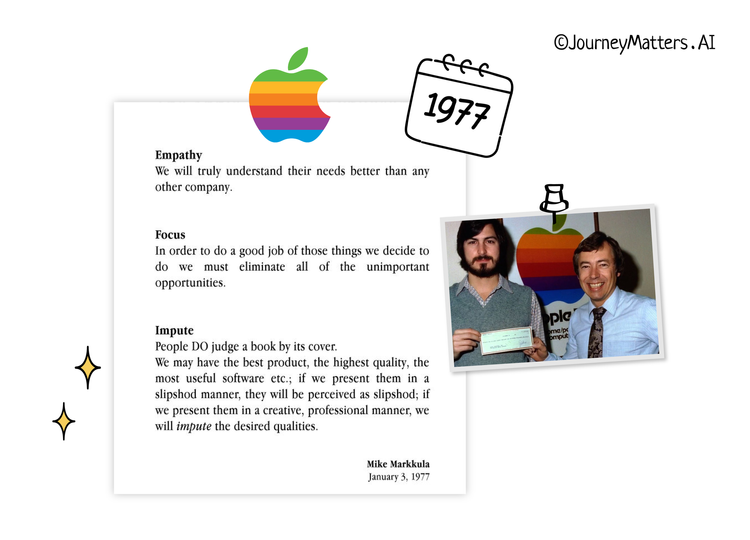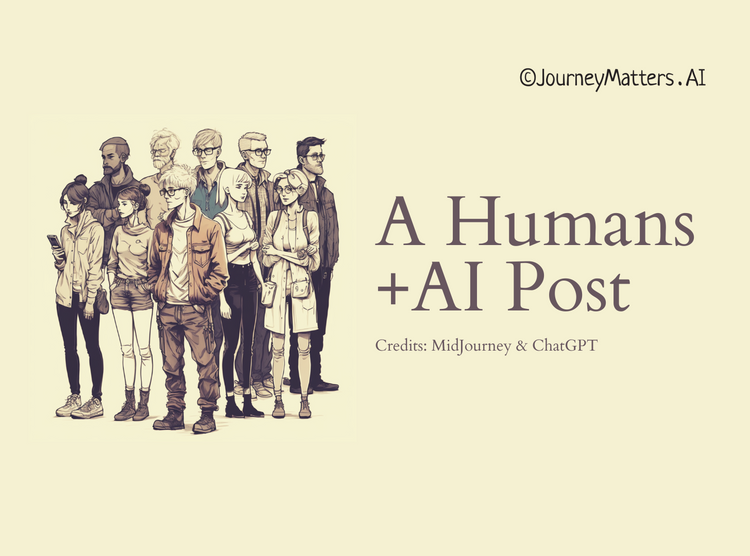Designing Experiences Matters

How Uber does it?
Summary
What was the worst first experience you've ever had with a product or service? If you remember that, you will also remember how you stopped doing business with that company and told all your friends about it. Keeping that in mind, you should be aware that your customers would most likely do the same.
Let’s understand the importance of designing great first-time user experiences through the examples of Uber and Lyft:
- Why do first experiences matter?
- How do they design their First-Time User Experiences(FTUEs)?
Uber designs the driver’s first week for retention
This is an Uber driver’s story after he drove for the first week:
“I pressed ‘go online’ and waited. I did not quite know what to expect. After about 7 minutes, the phone started to beep, and a map with the destination appeared in the center of the screen. I automatically got GPS coordinates, and after a few minutes, the first passenger was in the backseat.
After the first trip was done, the app started beeping almost immediately, and I was on my way to the next destination. I worked about three hours on the first day, and I made about $130. Everyone was nice.”
- Sverre Rorvik Nilsen, a new Uber driver1
How did the driver end up satisfied with his first-time experience?
The answer is simple: Uber designed it that way.
Why do first experiences matter?

Driver acquisition costs are a big part of Uber’s operating expenses
Since its inception, one of the most expensive aspects of running Uber has been the cost of acquiring drivers. Uber has been comfortable spending large sums acquiring drivers and incentivizing users in an industry where keeping your cost of customer acquisition low is critical to scaling your growth.
In the early days of Uber, new drivers could earn up to $2,000 or $5,000 just for taking a few rides on the app2. Although referral bonuses have largely been phased out, Uber continues to spend hundreds of millions of dollars per quarter marketing to new drivers.
However, a bad first week means a lost driver
A bad first-week experience is detrimental to any business. It can lead to an increase in the customer churn rate.
Dan Hockenmaier3 talks about the problem in Lenny's podcast4:
They might think, "I just make $3 an hour on this platform," and they're never going to come back. And so if you can target streamlining that experience or homogenizing that experience, it's typically very helpful. This is why you see both of those companies dueling it out to guarantee the highest first-week or first-month earnings.
How do they design their First-Time User Experiences?
Where did Uber and Lyft start? Dan gives us a hint:
“If you take Lyft or Uber, for example, an Uber driver signs up for the service. Some of them, just by luck of the draw, are going to make a pretty bad hourly rate because a customer canceled on them or they were just in a low-density area, and there was some problem with their experience.
Given that Uber and Lyft decided that it is best to place drivers in high-density locations with plenty of liquidity.
In other words, they didn’t leave it to chance. They intentionally designed the first week and first month to ensure that the driver has a positive memory of their experience.
So, what’s First-Time User Experience?
The result of a user's very first engagement with a product or service frequently determines its adoption. This is why Uber and Lyft focus on understanding users from their first interaction, also known as their First-Time User Experience (FTUE).
The First-time user experience is not a single element of the onboarding process. It is a comprehensive set of thoughts, feelings, and understandings that the customers experience while interacting with a product/service for the first time.
It’s not just FTUE, but the Total Experience
The father of User experience, Don Norman5, talks about the importance of designing experiences in a holistic manner:
It’s the total experience that matters. And that starts from when you first hear about a product… experience is more based upon memory than reality. If your memory of the product is wonderful, you will excuse all sorts of incidental things.
Every industry must focus on a carefully crafted user journey that is designed to give the best total experience to the customer. This holds true for the multifamily industry as well.
Endnote
Uber and Lyft purposely design their First-time user experience to improve their retention rate.
In multifamily, if your goal is to improve resident retention, you will need to design resident experiences. This way, your residents will feel more engaged, empowered, and loyal to your community.
Do you have any stories related to first experiences with a product or service that we might learn from? We would love to hear them out.
Thoughts about our past or current issues? Please feel free to share. Until next time!





Member discussion